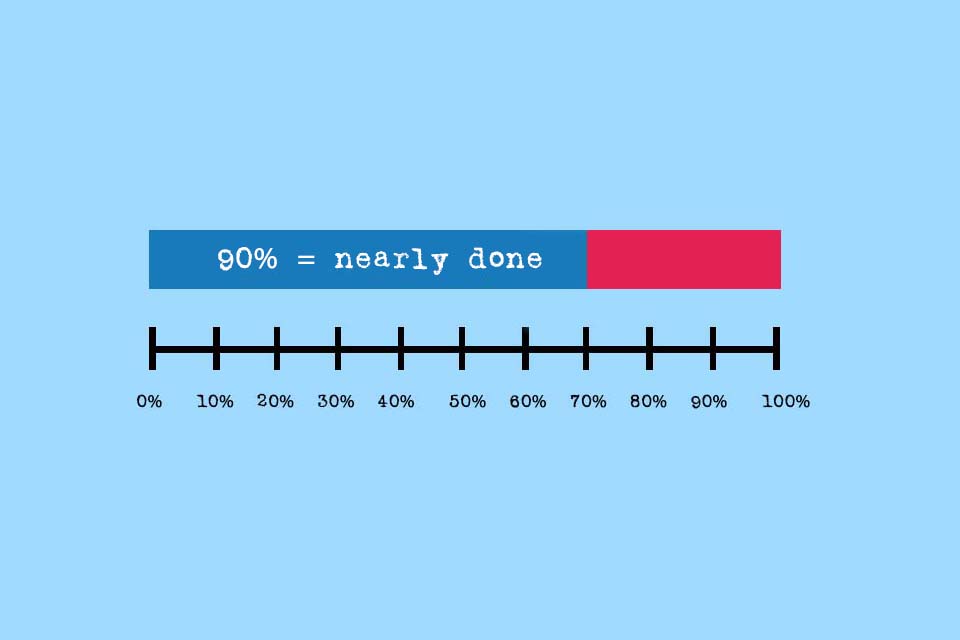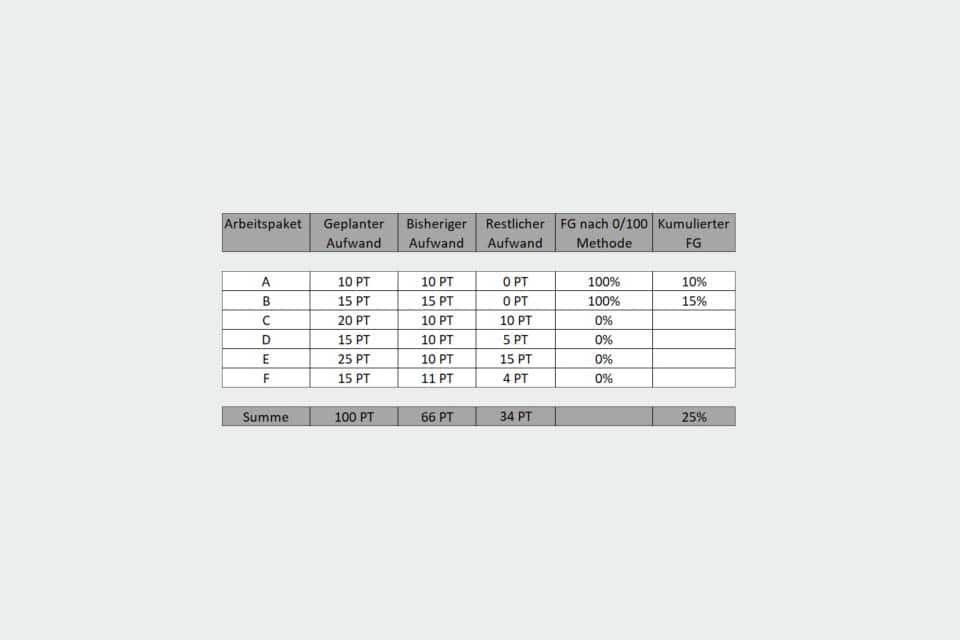What is the 90-Percent-Done-Syndrome?
90-Percent-Done Syndrome – almost done is not done
When estimating the progress of a project, assessing the remaining effort of a work package or determining the degree of completion of a task, many employees often make an elementary mistake: they estimate too positively. This overly positive and incorrect estimation of effort is known as the 90-Percent-Done Syndrome.¹
The syndrome describes a situation in which employees mistakenly believe that they have already realised 90% of the expected results. This effect is often caused by the assumption that most of the problems have already been solved, while the remaining 10 per cent are considered insignificant and can be implemented quickly. In reality, these last 10 per cent are often particularly challenging and time-consuming. This is because unforeseen difficulties, impediments, new requirements or necessary corrections may arise that were not previously considered. In practice, the 90% syndrome often leads to an actual effort that is significantly higher than the 10 per cent that is apparently still required.
Consequences of the 90-Percent-Done Syndrome
Misjudgements by employees often have consequences:
- There are delays, sequential work packages or work assignments cannot be started, buffers are used up and deadlines may not be met.
- Alternatively, work packages or work assignments are already started because only ‘minor details’ appear to be missing. In practice, however, this can lead to additional expenses, for example in the case of technical interfaces that are still changing and then require adjustments to developments that have already been started.
- In general, credibility suffers. From those who miscalculate and from those who pass on corresponding estimates.
The 90-Percent-Done Syndrome can also be exacerbated by perfectionism, where small changes are repeatedly made to perfect the project. These final steps, which often seem minor, can take a surprising amount of time and resources.
Possible Remedies for the 90-Percent-Done Syndrome
The 90-Percent-Done Syndrome (abbreviated as 90% syndrome) is also promoted by the query of concrete stage of completion of processes, work packages or projects. As statements such as ‘almost finished’ are relatively imprecise, employees are often asked to state specific percentages. ‘Almost finished’ quickly becomes 90 per cent.
It is therefore advisable to scrutinise subjective effort estimates or to use alternative methods such as the 0/100 method, so that only actual completion after corresponding acceptance is taken into account in further project planning. The use of a Definition of Done has also proven itself in practice. These measures help to better capture the realistic requirements of the last 10% and prevent the risk of falling into the 90% trap.
Impulse to discuss
Is there a way to fix the “almost done is not done” or will it always occur?
Notes:
[1] Alternatively, it is also referred to as Almost-Finished Syndrome.
Here you can find a German podcast about the 90-Percent-Done Syndrome.
If you like the article or would like to discuss it, please feel free to share it in your network. And if you have any comments, please do not hesitate to send us a message.
And here you will find additional information from our Smartpedia section:



